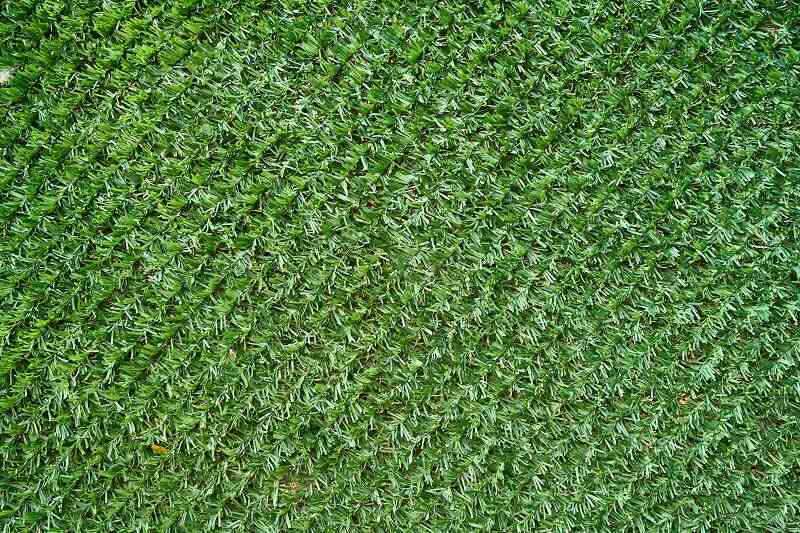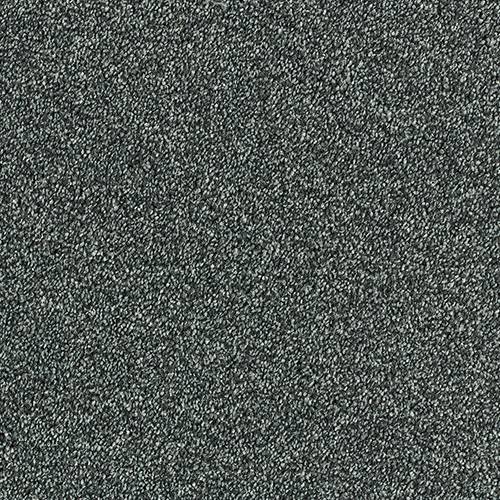Are you torn between choosing artificial grass vs. real grass for your lawn? We will explore the differences between the two options, highlighting the pros and cons of each. From cost and maintenance to durability and environmental impact, we will cover all the key factors to consider.
By the end of this read, you will have a clearer understanding of whether artificial grass or real grass is the better choice for you. What is better, artificial grass or real grass? Let’s dive in and make an informed decision!
What Is Artificial Grass?
Artificial grass, also known as turf, is a synthetic alternative to natural grass commonly used for landscaping, sports fields, and residential lawns. It is made from synthetic fibres that mimic the look and feel of real grass.
The manufacturing process of artificial grass involves combining various materials like polyethylene, polypropylene, and nylon to create the synthetic fibres. These fibres are then tufted into a backing material, often made of latex, to form the grass carpet. This process results in a durable and resilient product that can withstand heavy foot traffic and varying weather conditions.

See product: Summer Days Sherwood
What Is Real Grass?
Real grass, also referred to as natural grass, is the authentic, organic grass that grows naturally in outdoor environments. It is a living plant that requires sunlight, water, and nutrients to thrive.
Real grass serves various purposes beyond aesthetic appeal, such as providing a soft cushion for recreational activities and enhancing biodiversity by creating habitats for insects and small animals.
Real grass helps in capturing carbon dioxide and releasing oxygen, contributing to a healthier environment. Unlike artificial grass, which is synthetic and may not offer the same benefits, real grass requires regular maintenance like mowing, watering, and fertilising to ensure its health and lush appearance.
Artificial Grass vs. Real Grass: Pros and Cons
The Pros of Artificial Grass
The advantages of artificial grass, also known as turf, include low maintenance requirements, consistent appearance throughout the year, and durability against heavy foot traffic and harsh weather conditions.
Artificial grass is incredibly long-lasting, offering years of use without significant wear and tear. Its high durability makes it ideal for spaces where natural grass struggles to thrive. By choosing synthetic turf, you are investing in a solution that will remain lush and vibrant for many years to come. Moreover, artificial grass requires minimal water usage, contributing to water conservation efforts and reducing overall maintenance costs. This eco-friendly option not only looks great but is also environmentally beneficial.
The Cons of Artificial Grass
Despite its advantages, artificial grass, or turf, has drawbacks such as initial installation costs, potential heat retention in sunny climates, and environmental concerns related to its production and disposal.
One of the major disadvantages of synthetic turf is its heat absorption properties, especially in regions with intense sunlight. Unlike natural grass which stays cooler in the heat, artificial grass can become uncomfortably hot, making it less desirable for outdoor activities.
While artificial grass mimics the look of real grass, it lacks the natural feel and texture of genuine turf, which can impact the overall aesthetics of a landscape. Learn more about artificial grass pros and cons.
The Pros of Real Grass
The benefits of real grass, or natural grass, include its natural cooling effect, oxygen production, soil erosion prevention, and the pleasant feel it provides underfoot.
Real grass plays a crucial role in improving biodiversity by providing habitats for insects, birds, and other wildlife. This contributes to the overall ecosystem’s health and stability. Natural grass also acts as a carbon sink, sequestering carbon dioxide from the atmosphere, thereby helping to mitigate climate change. Another advantage of real grass is its ability to absorb pollutants from the air, thus enhancing air quality in urban areas. The aesthetic value of natural grass cannot be overlooked, adding beauty and tranquillity to any landscape.
The Cons of Real Grass
Despite its benefits, real grass, or natural grass, has drawbacks such as high maintenance requirements, susceptibility to pests and diseases, and potential water consumption issues in arid regions.
One major disadvantage of natural grass is the constant need for mowing, which can be time-consuming and physically demanding. Maintaining a lush green lawn often requires frequent fertilisation, leading to ongoing costs and potential environmental impacts due to chemical runoff. Seasonal care, such as aerating and overseeding, is essential for promoting healthy growth but adds to the already demanding maintenance routine. These challenges make it clear why some homeowners opt for alternatives like artificial grass to minimise the hassle of real grass upkeep.
Artificial Grass vs. Real Grass: Which One Is Better?
Choosing between artificial grass or natural grass depends on factors like cost, maintenance preferences, environmental considerations, and desired aesthetics.
Regarding cost, artificial grass may have a higher initial investment but requires minimal upkeep in the long run, reducing ongoing expenses. On the other hand, real grass requires regular maintenance, including mowing, watering, and fertilising, which can add up over time.
In terms of environmental impact, artificial turf doesn’t require pesticides or fertilisers, benefiting the environment. Some synthetic materials used in its production can raise concerns. Real grass contributes to oxygen production but requires more water and chemical inputs, impacting local ecosystems.
When considering the visual appeal, artificial grass provides a consistently green and manicured look year-round, enhancing kerb appeal. Yet, some may argue that the natural texture and variety of real grass offer a more authentic outdoor experience.
a. Cost
Cost is a significant factor to consider when deciding between artificial grass and real grass. Artificial grass typically has higher upfront costs due to installation expenses, while real grass may require ongoing maintenance costs.
When comparing the cost implications of artificial grass and real grass, one must also take into account the long-term expenses associated with each option.
How much does artificial grass installation cost? Artificial grass, despite its initial investment, tends to be more budget-friendly over time as it requires minimal upkeep and eliminates the need for water, mowing, fertilisers, and pesticides.
On the other hand, real grass can rack up expenses with regular watering, lawn care products, and professional maintenance services, impacting your overall landscaping budget in the long run.
b. Maintenance
Maintenance requirements differ between artificial grass and real grass. Artificial grass needs minimal upkeep like occasional cleaning and brushing, while real grass demands regular mowing, watering, and fertilising to maintain its health and appearance.
While real grass may require more regular attention, some find the process therapeutic, viewing it as a time for mindfulness and connection with nature. On the other hand, artificial grass tends to be more resilient in adverse weather conditions but may need occasional adjustments to prevent matting. Sustainability-wise, real grass contributes positively to the ecosystem, aiding in carbon absorption and improving air quality with its natural processes, while artificial grass, though low-maintenance, raises environmental concerns such as disposal at the end of its life cycle.
c. Durability
In terms of durability, artificial grass excels in withstanding heavy use and extreme weather conditions, maintaining its appearance without wilting, yellowing, or bald spots commonly seen in real grass.
Artificial turf is designed to withstand high-traffic areas, making it a perfect choice for sports fields, playgrounds, and landscaping projects. Its synthetic fibres are engineered to resist wear and tear over time, ensuring a longer lifespan compared to natural grass.
Artificial grass requires minimal maintenance, eliminating the need for watering, fertilising, and mowing. This not only saves time and effort but also reduces water consumption and chemical usage, making it an environmentally friendly option.
d. Aesthetics
Aesthetically, the choice between artificial grass and real grass depends on personal preferences.
Artificial grass, with its uniform appearance year-round, can create a neat and polished aesthetic suitable for modern and minimalist designs. On the other hand, real grass offers a dynamic visual appeal, enhancing the natural beauty of outdoor spaces with its changing hues and textures throughout the year. This diversity in design options allows homeowners to tailor their landscaping to match the overall style of their property.
e. Environmental Impact
When considering the environmental impact, real grass is eco-friendly as it contributes to oxygen production, soil health, and biodiversity, whereas artificial grass raises concerns about plastic waste, water runoff, and its non-biodegradable nature.
Real grass, with its natural ability to absorb carbon dioxide and release oxygen, plays a crucial role in combating climate change and enhancing air quality. It promotes soil stability, prevents erosion, and provides habitats for insects and animals.
Artificial grass, on the other hand, is typically made from petroleum-based materials, contributing to the depletion of fossil fuels and emitting greenhouse gases during manufacturing.
f. Pet and Child Friendliness
For pet and child-friendliness, artificial grass offers easy clean-up, durability against wear and tear, and non-toxic materials, while real grass provides a natural play environment but may require pest control and maintenance.
Artificial grass is crafted to withstand the activities of pets and children, ensuring a resilient surface for play and relaxation. Artificial grass’ pet-friendly qualities include resistance to digging and odours and the absence of muddy patches that can soil indoor spaces. This makes it an excellent choice for households with furry friends and active youngsters who love spending time outdoors.
On the other hand, while real grass offers a traditional and lush look, it can harbour insects like ticks and fleas, posing potential risks to both pets and children. Maintaining real grass requires regular mowing, watering, and weeding, which can be time-consuming and involve the use of chemical fertilisers and pesticides.
g. Allergies and Health Concerns
Concerning allergies and health, artificial grass is hypoallergenic, pesticide-free, and reduces exposure to pollen, whilst real grass may trigger allergies, require pesticides, and harbour insects that can pose health risks.
When considering the impact on respiratory health, artificial turf offers a mode of relief for individuals susceptible to allergens found in traditional grass. With minimal maintenance requirements, turf eliminates the need for chemical treatments that are common in maintaining real grass lawns. This lack of chemical intervention further contributes to a safer environment for both humans and pets who enjoy spending time outdoors. The reduced risk of attracting insects and pests on artificial grass reduces the likelihood of insect bites and related health issues, especially in areas prone to infestations.
h. Climate and Weather Tolerance
In terms of climate and weather resilience, artificial grass remains consistent in extreme conditions, whilst real grass may struggle in drought-prone regions or during temperature fluctuations.
Artificial grass typically maintains its lush appearance and durability even in scorching heat, thanks to its heat resistance properties. This makes it ideal for regions with hot summers or arid climates where real grass may wither and turn brown.
On the other hand, real grass may have an advantage in cold tolerance, thriving well in cooler temperatures that artificial turf may struggle to adapt to. In areas with harsh winters, natural grass might retain its green colour and robustness, offering a more vibrant landscape during the colder months.
Regarding water requirements, artificial grass requires significantly less water compared to real grass, which can be a crucial factor in water-scarce regions or places with strict watering restrictions. This not only contributes to cost savings but also minimises environmental impact by reducing water consumption.
i. Usage and Functionality
Regarding usage and functionality, artificial grass suits high-traffic areas, sports fields, and commercial spaces due to its durability, whereas real grass provides a natural habitat for insects, wildlife, and gardening enthusiasts.
Artificial grass offers a low-maintenance alternative for areas where real grass could prove challenging to maintain, such as rooftops, balconies, and indoor spaces. In terms of versatility, synthetic turf can be customised to specific sizes and shapes, making it ideal for creative landscaping projects.
On the other hand, real grass contributes to environmental sustainability by improving air quality through photosynthesis and reducing heat by retaining moisture in the soil. It offers a soft, cushioned surface for outdoor activities and provides a soothing aesthetic in residential gardens and parks.
j. Resale Value
When considering resale value, properties with artificial grass often appeal to buyers seeking low-maintenance landscapes, while real grass landscapes may require upkeep to maintain market attractiveness and property value.
Artificial grass provides a consistent green appearance throughout the year, enhancing the property’s curb appeal without the need for watering, mowing, or fertilising that real grass demands. This convenience can be a significant selling point for homebuyers looking for a hassle-free outdoor space. Meanwhile, real grass can add a touch of natural beauty but may deter potential buyers concerned about the time and money needed to keep it in pristine condition.
Artificial Grass vs. Real Grass: Which One Should You Choose?
In conclusion, the choice between artificial grass and real grass depends on your priorities, budget, environmental values, and intended use. Consider the pros and cons of each option carefully to select the turf type that best fits your lifestyle and preferences.
Artificial grass offers low maintenance requirements, consistent appearance year-round, and durability against harsh weather conditions. On the other hand, real grass provides a natural aesthetic, cooling effect, and potential for increased property value.
When deciding between the two, sustainability considerations play a crucial role. Synthetic turf conserves water and eliminates the need for harmful pesticides, but it is typically made from non-biodegradable materials. Natural grass contributes to oxygen production, soil quality improvement, and overall ecosystem support.
If you are interested in bringing artificial grass to your home, you can directly contact TEKA Flooring to get the best quality of artificial grass.
You can also use the professional fitting service from TEKA, ensuring perfect installation of artificial grass or other types of flooring, and receive a 24-month warranty. Get a free, no-obligation flooring quote today!
Read also:

































